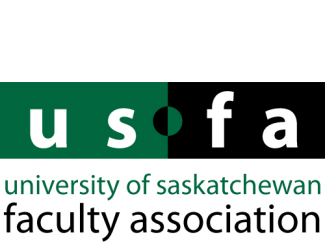Terminology used in University of Saskatchewan financial information
Academic Priorities Fund (APF)
Created to fund innovative initiatives undertaken as a result of the integrated plan. It is a piece of the operating budget that is set aside to support institutional priorities.
Ancillary Fund
Reflects commercial activities of the organization, such as the bookstore, real estate and the sale of utilities. Ancillary services are activities that are supplementary to the institution’s primary operating activities of instruction and research.
Capital Fund
Reflects the resources dedicated to buildings, equipment and other physical assets of the university. Repair and maintenance activity that does not meet the accounting requirements for capitalization are not recorded in this fund, but are captured within the Operating Fund. The majority of the activity reflected in the Capital Fund is associated with Facilities Management, and would not be reflected in a college or unit’s information.
Endowment Fund
Funds where the donor has requested that the principal be maintained in perpetuity, with investment earnings used to support annual expenditures. Thus, endowment funds contain a mix of donations (contributed capital) and accumulated investment earnings (segregated capital).
The university may spend all or a portion of investment earnings in accordance with spending policy. There are three categories of endowments. Permanent endowments are contributions where an external donor has placed restrictions on spending. Term endowments are contributions, generally provided by external donors, with restrictions on spending for a specified period of time only. Internally restricted endowments reflect resources allocated by the university and the Board of Governors, with restrictions placed on the use of the principal.
Financial Flexibility
A section in U of S Annual Reports that provides information about and measurements of the sufficiency of university resources and its ability to support priorities.
Financial Sustainability
A section in U of S Annual Reports that provides information about and measurements of the University’s long-term financial health. These include non-financial statement measures: deferred maintenance backlog; debt and comparison to debt capacity; and comparative “best estimates” position of defined benefit pension plans.
Fund Hierarchy
An accounting method that breaks the university’s financial reporting into three broad categories of funds: General Fund, Restricted Fund and Endowment Fund. All of the over 15,000 university funds eventually roll up into one of these categories with a number of levels of aggregation in between.[/text_output][/vc_column_inner][vc_column_inner width=”1/2″ fade_animation=”in” fade_animation_offset=”45px”][text_output]
General Fund
Includes the operating and ancillary activities of the university. These activities represent the unrestricted and internally restricted activities of the university. As a rule, the General Fund does not usually include activity for which there are externally placed restrictions on the funding.
Operating Budget
(detailed operating budget, detailed budget)
A forecast of expected annual operating revenues and planned operating expenditures that support the university’s academic mission. It is a forecast of the university’s core operating revenues and expenditures for the year and does not include revenues received for specific purposes.
It is comprised of four primary sources of operating budget revenue:
- an annual grant from the Province of Saskatchewan, which accounts for 68 per cent of the operating revenue;
- tuition fees, which account for about 23 per cent of operating revenue;
- other government grants, such as those received from the other Western provinces for the Western College of Veterinary Medicine and from the provincial government for InterVac which account for about 5 per cent of operating revenue; and
- investment and other income.
This revenue is used to pay for operating budget expenses, which include salaries and benefits, utilities and other basic expenses, as well as strategic investments.
Operating Fund
A fund within the General Fund, it includes the primary teaching, administration and academic activities of the institution.
Operating Grant
The annual allocation the university receives from the Province of Saskatchewan for core academic activities.
Restricted Fund
Includes activities of the university where restrictions on the use of funding have been set by external entities or internal decisions of the university. While there is allowance for the internal restriction of the resources within each of the restricted categories, funds are restricted to specific purposes.
Restricted Funds within the Operating Fund
Funds set aside for specific purposes as determined by the Board of Governors.
See also:
Usask Finances Glossary of Terms
Usask Financial Fund Hierarchy
It’s about choice.
“TransformUS is predicated on assumptions that lead to a $44.5 million deficit by 2015-16. So, why isn’t anyone talking about the budget?” Doug Chivers, Rawson Chair of Biology and USFA Chair

